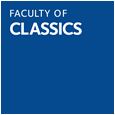The rich finds of statues and inscriptions from Aphrodisias in Caria have done much in recent years to illuminate the world of the late Roman politician, the world of governors and local magnates. Aphrodisias has also recently provided important new evidence for the philosophical image of late antiquity. In 1981–2, the excavations under Professor K. T. Erim recovered a remarkable group of marble shield portraits and busts that represent both contemporary late antique philosophers and ‘classic’ figures of the hellenic past. These portraits add a new dimension to our knowledge of Aphrodisias as an intellectual centre and provide a vivid insight into the pagan culture and education of late antiquity. We are in the world of Eunapius’ Lives of the Sophists. We are probably in the context of a philosophical school, perhaps the philosophical school of late Roman Aphrodisias.



